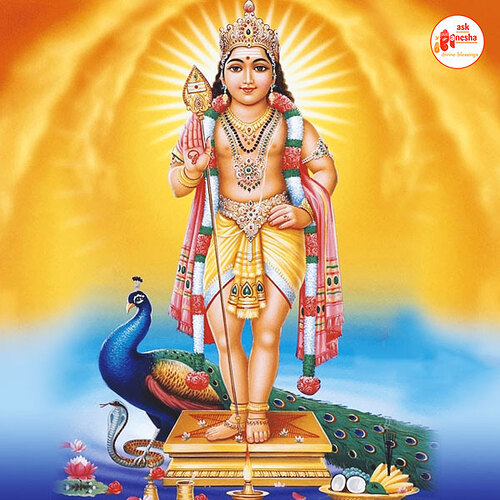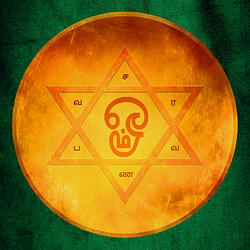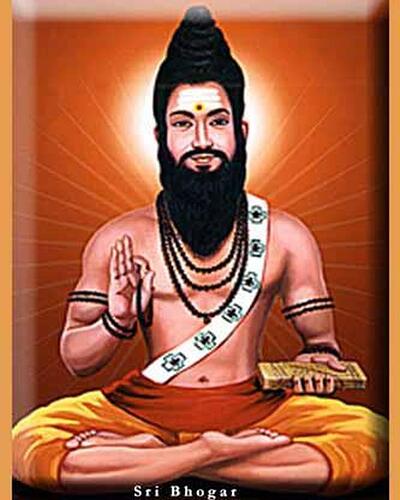This NFT(Audio+Mandala) will include
1. Strong connection and intercession with lord murugan
1.1 Enhanced Psychic communication
1.2 Embody us with all the tattwa and attributes of Murugan
1.3 Boons and guidance to pursue the goals and needs of the user (like having him as a GURU who can guide us and teach us ,if we wish to learn about anything from him, Protect us, Give us boons.)
2.Smart Portals to 7 major temples of murugan to access the energy of the temple and the deity
Palani
To include connection and access to siddha Bogar and to the energy of Navapashanam statue
Thiruparankundram
Thiruchendur
Swamimalai
Thiruthani
Pazhamudircholai
Kathirkamam (Sri Lanka)
3 . Power of Vel
“Vetri Vel ( Spear of Victory) , Veera Vel ( Spear of Valour) , Shakti Vel ( Spear of All Cosmic Power)” is a famous commoners slogan before embarking on any mission in life.
The Vel represents the highest power of Sakti (Para-Sakti), which when employed by Murugan, dispels all phenomenal illusion and allows the aspirant to see beyond the world created by Mayai (maya ). Murugan’s acquisition of the Vel represents the fusing of Jnana-Sakti of Siva (i.e. his absolute power of wisdom), and the Para-Sakti of Parvati, to form Yoga-Sakti (contemplative knowledge). Murugan with his Vel is thus identified as the pursuit of the pure spiritual knowledge, which destroys the asuras or impurities within the devotee. In essence, Murugan may be thus perceived as the principle of Siva-Sakti’s action within the substance of the mind. Vel is also a representation of the third eye.
Vel worship shall remove your bad karma and fear. Divine Protection from evil eye/entities curses and diseases. Power to overcome the obstacles you come across in your spiritual journey and Transform your physical body into a ‘light’ body, etc.
3.1 Energy and benefits of fully energize Subramanya Yantra
Subramanya Yantra or Saravanabhava Yantra is one of the most powerful Yantras. It can give the following, if it energized with proper mantras as per procedures given below and maintain the yantra properly:
- Lakshmi Kadaksha or wealth
2.Sakala Karya Siddhi (Success in Attempts)
3.Flourishing business.
4.It removes all effects of black magic and affects the person who perform black magic. Removing of Pilli, sooniyam or Kala Jadu.
5.It eliminates enemies.
6.It protects us from injuries and accidents.
3.2 Mantra siddhi
Om SA RA VA NA BA VA (https://youtu.be/ZLPUrDAJxFY)
Subramanya astothram
Kanda shasti kavacham
Murugan, also known as Kārttikeya (“son of Krittika”), Shanmukha (“one with six faces”), Kumāra (“child or son”), Skanda (“attacker”) among other names,[1] is both the youthful God of war and the patron deity of Tamil Nadu in South India. He is very a popular Hindu deity among Tamil Hindus, and is worshiped primarily in areas with Tamil influence, including Sri Lanka, Malaysia. Lord Murugan is well known as who transmitted the Tamil language together with its mysteries long ago to sage Agastya Muni, who in turn shared it with humanity.
Lord Muruga is usually depicted as a youthful god with a charming personality, dressed as a warrior and holding his weapon Vel (lance) in his hand. Sometimes, he is shown with six faces and 12 hands, carrying different weapons, which include sword, mace, javelin, discus, bow, etc. His mount peacock and a snake always accompany him. At times, he is also depicted along with his two consorts –Valli, a daughter of a tribal chief and Devayani (also called Devasena), the daughter of Indra. The form of Murugan with his consorts also serve to explain the 3 main Shaktis he possesses. Valli represents “Icha Shakthi”(Willpower/Desire), Devayani represents “Kiriya Shakthi”(Power of action) and the “Vel” or spear he holds represents “Gnana Shakthi”(Power of Wisdom).
Murugan is a master of many great qualities and divine attributes. His worship shall help the devotees overcome the three prime impediments of Karma (destiny), Maya (illusion) and Ahankar (ego). They would also be blessed with courage, confidence, determination, knowledge, skills, intelligence, and wisdom. Muruga is also the overlord of the warrior planet Mars and worshiping him shall help people to get relief from the malefic effects of the fiery planet. Muruga’s vel is also a psychic weapon, which can destroy karmic bonds, darkness, and disease, while his rooster has the power to destroy evil and negativity.
Mythology behind Lord Muruga
The advent of Muruga became necessary for saving the universe from the atrocities of the mighty demons, who obtained many boons, became quite powerful and started oppressing even the Gods.
There were three asura brothers–Soorapadman, Tarakasuran and Simhasuran–who were the sons of a great rishi named Kashyapa. Their mother Maya was an asura lady. When Kashyapa preferred to teach them the principles of dharma, ahimsa and ethics, his wife Maya countered and taught them the mantras or incantation for obtaining powers to conquer the devas and become rulers of the world.
Their tyranny over the conquered devas was such that the devas, with Vishnu and Indra at their head, went to appeal to God Siva. Soorapadma was granted a boon by Shiva that made him nearly immortal—he could only be killed by someone who is an offspring of Shiva and Shiva alone, would not intervene but entered yogic trance (samadhi) instead.
However, when the cruelties of the asuras became unbearable, the devas again appealed to Siva. This time Siva opened his third eye and out of it came six rays of blazing flame of lights. These were received by Agni and diverted into a marshy lake called Saravana Poigai or ‘forest of reeds’, where each ray turned out to be a child. Hence, we hear of the six syllables Saravana- bhava, ‘born in the forest of reeds’.
These six divine babies were well taken care of by six Karthigai Pengal (damsels), who were the personifications of the powerful star Krittika (Pleiades). Later, it is said, Goddess Parvati very fondly hugged the six young ones together, they all merged into a single form, with six heads. Pleased with the service of the angels, the divine couple Shiva and Parvati, named the baby as Karthikeya.
Then Muruga set out on his mission of ridding the universe of evil forces. Armed with the mighty Vel (lance), presented to him by his mother Parvati, embodies her energy and power, Muruga led an army of celestial beings against the demon army and fought Surapadma, his henchmen, and their mighty forces. The fierce battle ended on the 6th day. But the merciful Lord, didn’t actually kill Surapadma, but only destroyed the evil in him, and accepted the chastised demon as his devotee. In the last phase of the battle, Surapadma realized that his opponent was none other than the invincible Muruga, and began changing himself into different forms, using his illusory powers. But these were of no avail. Ultimately he became a big mango tree, which Muruga split into two, with his Vel. As a very last effort, the demon converted himself into a peacock and rooster, from the two tree pieces. Muruga not only tamed both in no time but also showed his compassion by accepting the peacock as his vehicle and transformed the rooster into his flag’s symbol.
when Lord Muruga comprehensively defeated Surapadma and his evil forces, relieving the Gods and the people, of his repression. This Shasti day, that is, the 6th day of the waxing moon is observed as Skanda Shasti, in the Tamil month of Aippasi (mid-October to mid-November).
Important Temples of Lord Muruga
While Muruga worship is done extensively all over Tamil Nadu and also beyond and there are many temples dedicated to the Lord, six of them are considered especially significant and holy. These are believed to be connected to the various important anecdotes of his life and are referred to commonly as Aru Padai Veedu, the six abodes of the Lord
1. Thiruparankundram
Located on the outskirts of Madurai, Muruga is worshipped as Subramaniyan at the shrine here. The temple is a cave temple which is located upon a hillock. The place is believed to be the spot where Murugan was married to Deivayanai, who happens to be the daughter of Lord Indra, as a gratitude to Murugan over the victory of the demon king Surapadman.
2. Thiruchendur
The shrine at Thiruchendur was built to mark the victory of Murugan over the demon king Surapadman. Located in the Tuticorin district, it is the only temple out of the six temples dedicated to Muruga which is located near a seashore while the other five are located in hilly regions. According to legends, after the killing of Surapadman, Lord Muruga wanted to thank his father Shiva, for which the divine architect Mayan was summoned and he constructed the shrine. Even now one can see Muruga in the posture of offering prayers to his father.
3. Palani
The Palani Murugan Temple is known as Dhandayuthapani Swamy Temple, since the lord here is worshipped as Dhandayuthapani or the the one who is holding a staff in his hand. Located in the Dindigul district. The idol of Muruga here is made of a mixture of nine poisonous substances which also worked as medicines when mixed at a certain ratio by a saint named Bhogar. According to legends, Sage Narada visited Lord Shiva in his abode and presented him a fruit which was considered as the fruit of knowledge. Shiva decided to hold a competition amongst his two sons, Ganesha and Muruga, and the fruit would be given to the first one to arrive after circling the world. Muruga accepts the challenge and quickly mounts his vahana, the peacock, to begin his journey around the world. Ganesha in turn said to Shiva that for him the entire world is his parents and he would circumambulate them. This clearly made him the winner and Shiva awarded the fruit to him. When Muruga returned he found that his elder brother had already won the fruit, which came as a big disappointment to him and so he left Kailash and stood atop the Palani Hills.
4. Swamimalai
Also known as Swaminatha Swamy Temple, Swamimalai lies at a close proximity to the temple town of Kumbakonam. it is located atop a hillock and to reach the shrine, one has to climb 60 steps which are named after 60 Tamil years. Muruga here is known as Balamurugan and as Swaminatha Swami. The temple is considered as the place where Muruga preached the meaning of the Pranava Mantra to his father Shiva. Hence, the place is abode to the unique form where the son is the teacher and the father is the student. Another uniqueness you would come across is that an elephant is his vehicle instead of the peacock in the sanctum; it believed the elephant is Airavatha which was gifted to Muruga by Indra.
5. Thiruthani
The Thiruthani Murugan Temple is also known as Sri Subrahmanya Swami Kovil and is located on a hillock. The temple is located about 700 ft above sea level and devotees are bound to climb 365 steps to reach the shrine, the 365 steps represent the 365 days of the year. The temple has a quite a number of legends associated with it, one amongst them is that Muruga is believed to have taken rest atop the hill in order to calm himself down after killing the demon king Surapadman at Thiruchendur. Another legend states he married Valli at this place and yet another staes that Indira gave his daughter Devayani in marriage to Muruga and as a gift, gave him his elephant Airavata. Indra noticed that his wealth was dropping after Airavata left, Muruga offered to return the elephant but was refused by Indira and instead insisted that the elephant face his direction and hence, the image of the elephant at the temple also faces the east and not the deity.
6. Pazhamudircholai
Also known as Solaimalai Murugan Temple, the Pazhamudircholai Temple is located near the city of Madurai. Since time immemorial, the Vel, which is the weapon of Lord Muruga has been worshipped as the presiding deity in the shrine. Lord Murugan here is known as Kurinji Nilam Kizhavan and stands along with his consorts Valli and Devayani, which makes it the only temple amongst the six abodes where he blesses his devotees along with his consorts.
Kathirkamam (Sri Lanka)
Mysteries within mysteries surround Kathirkamam and its traditions. Devotees from far off places eagerly come here to seek His grace, but when they stand before the sanctum sanctorum, they see only seven tirai or curtains painted with the image of Skanda flanked by Valli and Teyvanai. The screens prompt the devotee to turn within so that his attention is fixed upon his own Self as the reflection of Murugan. The presiding kapurāla-priests perform pooja silently while masked, has come down to them from the indigenous Veddas before them, take the offering of the devotees, go inside, offer worship on behalf of the devotee and come back with the Lord’s prasādam.
The worship is offered to the deity, whose Presence is widely believed to reside in a yantra or magical diagram etched upon a metal plate with the Omkara mantra inscribed on it. It is never displayed—nor is its existence either confirmed or denied. There is also a version explanins that this yantra was established by siddha Boganath. Even though the devotee finds no image of the deity, The experiences the presence of Murugan within and returns with a great sense of fulfilment and illumination.
Another unique feature of the temple is its link with Mount Kailāsa in western Tibet. A North-South meridian line drawn on the map from Mount Kailasa meets Kathirkamam in the far South.
Subramanya ashtothram is the collection of the 108 divine names of Subramanya that describes the sacred nature and divine qualities of this lord.
Kanda Sasti Kavacham composed by Śrī Deva Raya Swamigal in Tamil language helps one to obtain the grace of Lord Murugan. This is a rare and valuable treasure that helps one to be successful in day-to-day life.
In Kanda Sasti Kavacham the author prays to Lord Muruga to shower His grace. It is certain that by regular chanting of this kavacham all the predicaments of life are resolved. People without children will enjoy fertility. Prosperity and plenty will abound. Peace will prevail at home. The devotee will enjoy every good fortune under the sun. As a warrior going to battle puts on armour to protect himself, so Kanda Sasti Kavacham helps one to be safe in day-to-day life.
English Lyrics with English translation(Kanda Sasti Kavacam in Tamil and English)
OM SHARAVANA BHAVA








